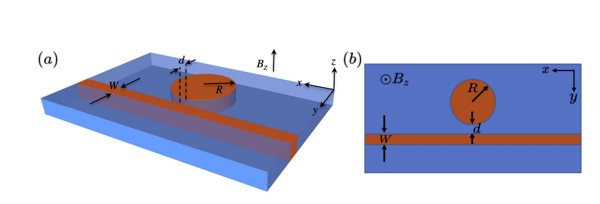Optical isolators are nonreciprocal devices that allow light to pass in one direction but block light in the opposite direction. They are typically used to prevent unwanted back reflections into optical oscillators such as lasers, and to suppress crosstalk between different optical devices. Nonreciprocal optical elements such as circulators and isolators are essential for the realization of integrated optical circuits. The design of nonreciprocal components requires breaking the time reversal symmetry. This can be achieved through the use of nonlinear materials, materials with time-dependent properties, and magneto-optical materials. However, since the magneto-optical response of natural materials is weak at optical wavelengths, designing nonreciprocal devices that are based on magneto-optical materials results in bulky structures that are much larger than the wavelength. The advent of silicon photonics and photonic crystals has reduced the size of nonreciprocal optical components down to wavelength scale.
To further decrease the size down to the subwavelength scale, one needs to beat the diffraction limit. Nanoscale metallic structures that support surface plasmon polaritons can be used to achieve subwavelength scale optical components, because they can beat the diffraction limit. Combining metallic and magneto-optical materials can therefore pave the way for highly compact nonreciprocal plasmonic elements. One of the promising ways to engineer integrated plasmonic circuits is to employ metal-dielectric-metal waveguides. Several different nanoscale plasmonic components based on metal-dielectric-metal waveguides have been proposed, including filters, couplers, sensors, switches, and rectifiers.
The research group led by Professor Georgios Veronis from Louisiana State University introduced an extremely compact nanoplasmonic isolator. The isolator consists of a plasmonic resonator placed close to a metal-dielectric-metal plasmonic waveguide with the material filling the waveguide and the resonator being a magneto-optical material (Fig. 1). Their research results are published in Chinese Optics Letters, Volume 19, No. 8, 2021 (Vahid Foroughi Nezhad, Chenglong You, and Georgios Veronis, Nanoplasmonic magneto-optical isolator [Invited]).

Fig. 1. (a) Nanoplasmonic isolator which consists of a cylindrical cavity with radius R placed close to an MDM waveguide with width W. The metal and MO material are shown with blue and orange colors, respectively. The structure is under a static magnetic field in the z direction. (b) Cross-sectional view of the structure at the z=0 plane.
The structure introduced in this work is subject to an externally applied static magnetic field. The cavity mode without magneto-optical activity splits into two modes when magneto-optical activity is present. In addition, the metal-dielectric-metal waveguide leads to a second resonance due to the geometrical asymmetry caused by the waveguide. When magneto-optical activity is present, the cavity becomes a traveling wave resonator. Traveling wave modes do not couple equally into the forward and backward propagating waveguide modes due to momentum matching. As a result, the transmission of the structure depends on the direction of the incident light. When light is incident from one direction, it is mostly absorbed, whereas, when it is incident from the opposite direction, it is mostly transmitted. The proposed structure therefore operates as an optical isolator.
The isolation ratio of an isolator is defined as the ratio of the transmitted optical power for light incident from the direction which allows light to pass, to the transmitted optical power for light incident from the opposite direction which blocks light. In addition, the insertion loss of an isolator is defined as the loss of optical power, when light incident from the direction which allows light to pass is transmitted through the isolator. The researchers showed that the proposed isolator has large isolation ratio and small insertion loss. They also showed that there is a tradeoff between the isolation ratio and the insertion loss of the isolator. This work will pave the way for fully functional nanoscale integrated optical circuits.


